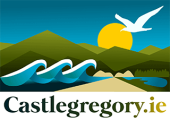Flora and Fauna of West Kerry
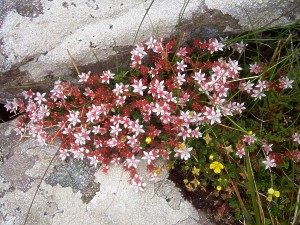
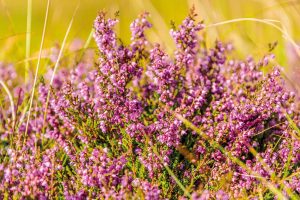
Tralee Bay is an important area for Ireland’s natural heritage, a Natura2000 site comprising a very diverse range of coastal and wetland habitats that are important both nationally and internationally. Natura2000 is the centrepiece of European nature and biodiversity policy, and consists of an EU-wide network of nature protection areas established under the 1992 Habitats Directive. The bay is a Special Area of Conservation (SAC) designated by Ireland under this directive, as well as a Special Protection Area (SPA) under the 1979 Birds Directive. Additionally, the bay was among the first Irish sites to be designated under the international RAMSAR convention, a treaty which provides the framework for national action and international cooperation for the conservation and wise use of wetlands and their resources.
Both the River Lee and Owenmore estuaries feature wide expanses of sheltered intertidal flats, often fringed with salt marsh vegetation. These flats are extremely important wintering habitat for several threatened wildfowl species, most notably European golden plover and bar-tailed godwit. The bay is also home to internationally important numbers of wintering wetland birds like teal, whooper swans and pale-bellied Brent geese, which feed on the extensive eelgrass beds found in the eastern part of the bay.

The fixed sand-dunes and dune slacks at Magharabeg are among the most species-rich examples of these threatened habitats in Ireland, supporting in particular the largest breeding population of natterjack toads in Ireland. Large numbers of European otter are active around the river estuaries and lagoons. Breeding habitat for two protected bird species, peregrine falcon and red-billed chough, is found in the Slieve Mish Mountains to the south of the bay, and the largest Irish breeding population of hen harrier is found to the north in the Stacks Mountains. Courtsey:- https://www.traleebaywetlands.org/about
Fuchsia
A plant which has thrived here, especially in south and west Kerry, is the Fuchsia (fuchsia magellacina). This beautiful plant is not destructive like the Rhododendron. It confines itself to ditches mostly and have a beautiful red flower from May to September. It was first introduced here over a hundred years ago from South America. In the Dingle area where it is most common it is known in Gaelic as ´Deora De´ ( the tears of God).
http://www.kerrygems.com/flora/
A selection of the wild flowers you may encounter when hiking in Ireland
Ireland has forty shades of green, they say, but whilst hiking through the Irish countryside you’ll find the blues of harebell and scabious, the pinks of heather and thrift and the golds of hawkbit and carline thistle.
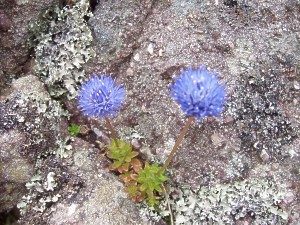

An ancient belief that the root of the Devils bit scabious had the power to cure the nasty disease of scabies (among other things) led to its common name. Because of these curative properties, it is said that the Devil bit the end off the root, an allusion to the way the end of the root dies and breaks off as the plant matures, leaving it looking bitten.
The plant with its deep blue flowers can be found in sandy areas, as well as grasslands, where it is more common.
The hairy-stemmed hawkbit thrives on rough open grassland, especially on chalky soils in the Southern part of Ireland.
The yellow flowers appear from June through to the autumn. These turn to feathery seeds similar to those of the dandelion with which the hawkbit also shares medical properties, both being used as a diuretic.

Harebells like an acid, chalky soil and can often be found in woodland or moorland. The shape of the delicate blue flowers has led to the common names of fairy bells or goblins’ thimbles. Each plant has two types of leaves – the round ones at the base and the long narrow ones on the stem.
According to the old herbals, foxgloves grew everywhere – in higher dry places and lower hedge-sides. They were described as having long, hollow reddish-purple flowers with some white spots within them, giving no scent but the leaves having a hot bitter taste. Attractive as they may look foxgloves are best gazed on and left alone as they contain digitoxins which can affect the rhythm of the heart.
The fleshy pale green stems of the early purple orchid grow out of a double-ovoid tuber, thought to be an aphrodisiac in olden times. It is a plant of grass and woodlands and the spire of bright flowers make it a magnet for insects
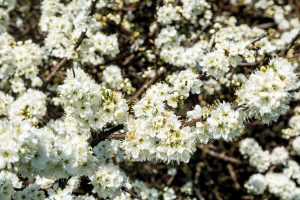
If you’re thinking of hiking in Ireland you may not consider the sand dunes and beaches as being a place to find wild flowers. Yet plants cling to even the most challenging, rocky parts of Ireland’s Atlantic coast. They take advantage of crevices in the cliffs and colonise the salty soils of the islands, peninsulas and seaside areas of two thousand miles of Irish coastline.
Sea Bindweed.
Sea Bindweed is a member of the convolvulus family and has the trademark twining stems with funnel shaped flowers that open and close with the daylight. Found more commonly in the sandy areas of Southern Ireland, the pink flowers make it more attractive than the white garden weed variety.
 Sea Holly
Sea Holly
Sea Holly grows happily on sand and shingle round the coast of Ireland. The blue flowers and collarette of stiff grey-green bracts make it a decorative, ornamental plant. In some parts of the British Isles it was once harvested so the roots could be boiled in sugar and eaten.
Sea Pink or Thrift
Sea Pink or Thrift is a hardy plant, seemingly oblivious to the salty winds, as it is often found on clifftops, among dunes and in cracks in slabs of bare rock. The pale pink heads stand up on stalks from cushiony tufts of grass-like foliage, which can form into large mounds.
Courtsey:http://www.irelandhikingvacations.com/ireland-flowers.asp
 The rare and protected Bee Orchid growing in Magherabeg, Maharees! The Bee Orchid (in Irish: Magairlin na mbeach) is named due to its lower peral’s resemblance of a Bumblebee – a device used to attract pollinators. We found this orchid growing last Sunday on our walk for Kerry Biodiversity Week led by Ciara Dolan. Keep your eyes peeled and let us know if you spot one…but no picking as they’re protected by law!
The rare and protected Bee Orchid growing in Magherabeg, Maharees! The Bee Orchid (in Irish: Magairlin na mbeach) is named due to its lower peral’s resemblance of a Bumblebee – a device used to attract pollinators. We found this orchid growing last Sunday on our walk for Kerry Biodiversity Week led by Ciara Dolan. Keep your eyes peeled and let us know if you spot one…but no picking as they’re protected by law!
If you have a keen interest in wild flower another great source of information on “wildflowers of Ireland” can be got from http://www.wildflowersofireland.net. Or https://www.amazon.com/exec/obidos/ASIN/0906096073/adinglecountyker as another great source of information


